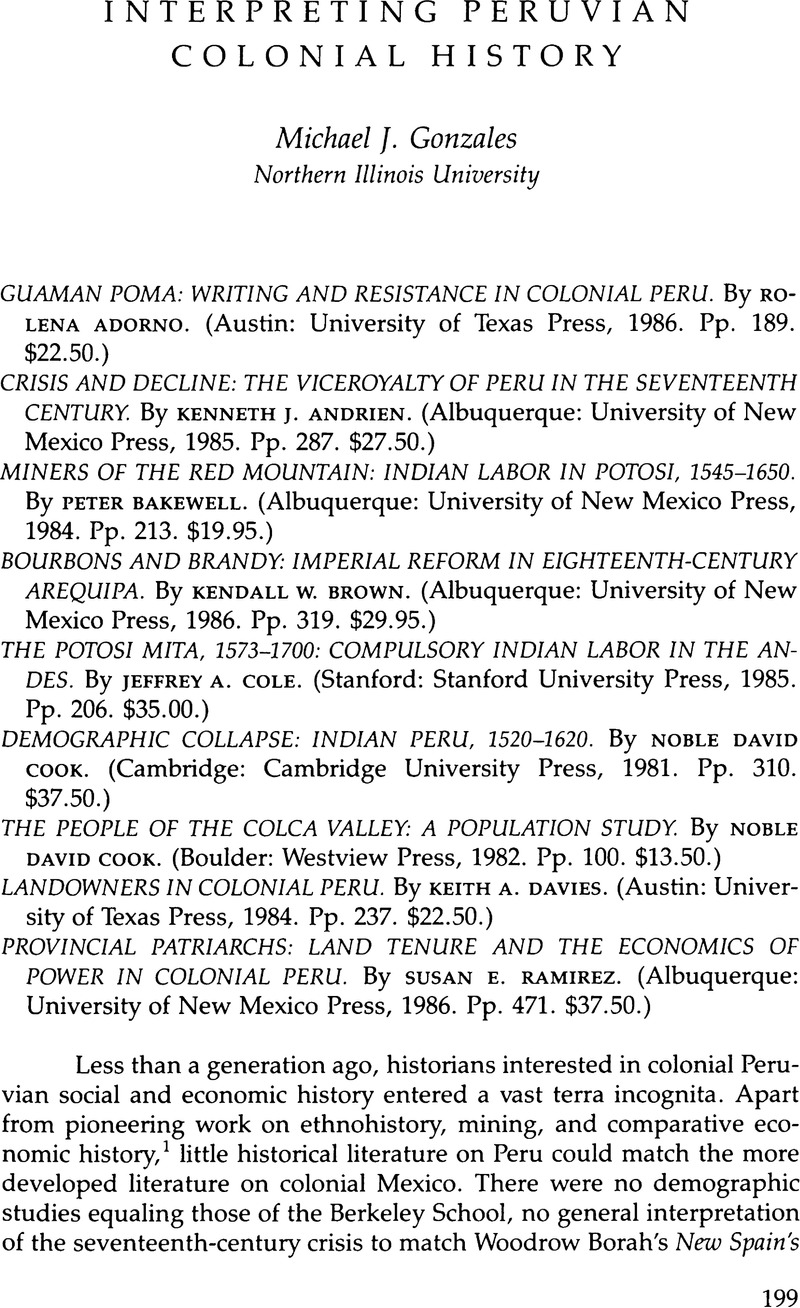No CrossRef data available.
Published online by Cambridge University Press: 12 October 2022

1. John V. Murra, “The Economic Organization of the Inca State,” Ph.D. diss., University of Chicago, 1956, now available as La organización económica del estado Inca (Mexico City: 1978). See also John H. Rowe, “Inca Culture at the Time of the Spanish Conquest,” Handbook of South American Indians, edited by Julian Steward (Washington, D.C.: U.S. Printing Office, 1946), 2:183-330; George Kubler, “The Quechua in the Colonial World,” Handbook of South American Indians 2:331-411; Guillermo Lohmann Villena, Las minas de Huancavelica en los siglos XVI y XVII (Seville: 1949); Arthur P. Whitaker, The Huancavelica Mercury Mine: A Contribution to the History of the Bourbon Renaissance in the Spanish Empire (Cambridge, Mass.: 1941); and Guillermo Céspedes del Castillo, “Lima y Buenos Aires: repercusiones económicas y políticas de la creación del Virreinato del Plata,” Anuario de Estudios Americanos 3 (1946):669–874.
2. For a review of much of the recent literature on rural history, see Eric Van Young, “Mexican Rural History since Chevalier: The Historiography of the Colonial Hacienda,” LARR 18, no. 3 (1983):5–61.
3. For example, see John V. Murra, Formaciones económicas y políticas del mundo andino (Lima: 1975); Nicolás Sánchez-Albornoz, Indios y tributos en el Alto Perú (Lima: 1975); Franklin Pease G. Y., Del Tawantinsuyu a la historia del Perú (Lima: 1978); Karen Spalding, Huarochirí: An Andean Society under Inca and Spanish Rule (Stanford: 1984); Steve J. Stern, Peru's Indian Peoples and the Challenge of Spanish Conquest: Huamanga to 1640 (Madison: 1982); Nathan Wachtel, La visión des vaincus: les indiens du Pérou devant la conquête espagnole (Paris: 1971); James Lockhart, Spanish Peru, 1532-1560 (Madison: 1968); Frederick P. Bowser, The African Slave in Colonial Peru, 1524-1650 (Stanford: 1974); Manuel Burga, De la encomienda a la hacienda capitalista: el valle de Jequetepeque del siglo XVI al XX (Lima: 1976); Robert G. Keith, Conquest and Agrarian Change: The Emergence of the Hacienda System on the Peruvian Coast (Cambridge, Mass.: 1976); Nicholas P. Cushner, Lords of the Land: Sugar, Wine, and Jesuit Estates of Coastal Peru, 1600-1767 (Albany, N.Y.: 1980); and Carlos Sempat Assadourian, El sistema de la economía colonial: mercado interno, regiones y espacio económico (Lima: 1982).